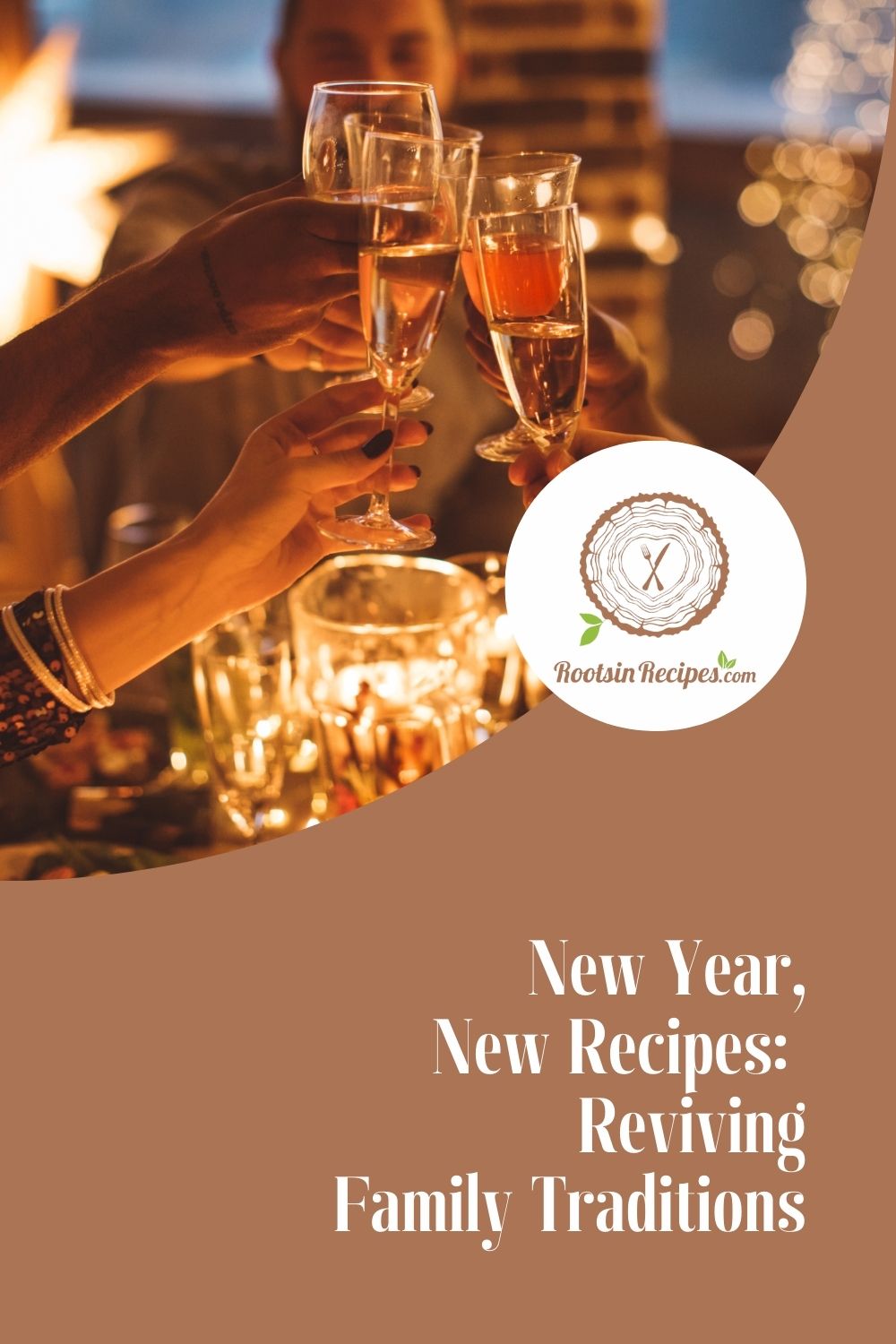
A Flavorful New Beginning
As the New Year dawns, we’re filled with possibilities, resolutions, and aspirations for what lies ahead. In this fresh chapter, what better way to cultivate connection and meaning than through our family traditions? Food, often the cornerstone of these traditions, holds the power to preserve our heritage, tell our stories, and create new memories.
2025 offers us the perfect opportunity to explore and revive family recipes—those culinary treasures passed down through generations. By documenting and adapting these recipes, we keep our loved ones close and our cultural roots alive. As an added inspiration, January is National Thank You Month, a time to express gratitude. What better way to say “thank you” than with a shared meal inspired by the stories and flavors of our past?
Let’s dive into how we can make this year meaningful through the preservation and celebration of family recipes.

Why Family Recipes Matter
A family recipe is more than a list of ingredients or a set of cooking instructions. It’s a time machine, transporting us to moments we’ve shared around the dinner table. That casserole your mom always made for holidays? It’s more than just comfort food—it’s a vessel of love, tradition, and nostalgia.
Preserving family recipes ensures that these precious memories and cultural identities endure. For many of us, recipes are one of the few tangible links to our ancestors and their way of life. They carry the flavors of their time, the struggles they overcame, and the celebrations they cherished.
Steps to Revive and Preserve Family Recipes
Preserving family recipes is as much about storytelling as it is about cooking. Here’s how to get started:
- Start with a Conversation
Reach out to your family members—parents, grandparents, aunts, uncles, cousins. Ask them about their favorite dishes, the meals they remember fondly, and the stories behind them. Questions like:
“What was your favorite dish growing up?”
“Who was the best cook in the family?”
“Are there recipes that remind you of a special moment?”
This dialogue doesn’t just uncover recipes—it strengthens bonds. - Document the Details
When writing down recipes, don’t limit yourself to ingredients and steps. Include the context:
-- Who created this recipe?
-- What occasions was it used for?
-- Are there specific techniques or tools involved?
For example, my grandmother Phyllis, a chemist during World War II, was known as the “chemist in the kitchen.” Her precise methods and bubbling personality inspired her culinary creations, and her recipes reflect her unique approach to cooking and life. - Adapt Recipes for Modern Times
Sometimes, older recipes call for ingredients that are hard to find or cooking methods that don’t align with modern kitchens. That’s okay! Part of preserving a recipe is allowing it to evolve while keeping its essence intact. - Create a Family Cookbook
Compile the recipes into a family cookbook. This doesn’t have to be a professional publication—it can be a simple collection of handwritten recipes, photos, and stories. A family cookbook is a living document, one that future generations can continue to build upon.
Cooking as a Form of Gratitude
January is National Thank You Month, a reminder to appreciate the people who enrich our lives. Food offers a unique way to express gratitude, as it brings people together in a way few other gestures can.
Here are some meaningful ways to use food to say “thank you”:
- Host a Gratitude Dinner
Invite loved ones to a meal where each guest brings a dish with a story. Share the origins of each recipe around the table. This not only fosters connection but also inspires others to explore their culinary heritage. - Gift a Recipe Card
Write down a cherished family recipe and gift it to someone special. You could pair it with a small sample of the dish or an ingredient that makes it unique. - Cook Together
Cooking together is a wonderful way to bond while sharing skills and stories. If you’re reconnecting with a parent or grandparent, take the opportunity to learn the techniques behind their signature dishes.
Building a Cultural Connection Through Food
Food is one of the most authentic ways to explore and celebrate cultural heritage. Every recipe tells a story of its origins, shaped by geography, history, and family values. When we revive and preserve family recipes, we’re not just saving individual dishes—we’re safeguarding traditions and identities.
For instance, think about the ingredients your family recipes call for. Do they reflect the agriculture of your ancestors’ homeland? The spices used in my grandmother’s recipes hint at the trade routes and cultural influences of her time. By learning about these ingredients and techniques, you gain a deeper appreciation of your roots.
Creating New Traditions
Reviving family recipes isn’t just about the past—it’s also about the future. Every generation adds its own twist to family traditions, creating new memories that future generations will treasure.
Tips for Starting New Traditions
- Make It a Group Activity: Plan a “Recipe Revival Night” where family members cook together and share stories.
- Pass the Torch: Teach younger family members how to make a classic recipe. Let them add their own twist to it.
- Experiment: Don’t be afraid to try new things with old recipes. Adding a modern touch can keep them relevant and exciting.
Food Memories That Last a Lifetime
Food has an incredible ability to evoke memories. The smell of baking bread might take you back to your childhood kitchen. A bite of a certain stew might remind you of family gatherings. By documenting and reviving these recipes, you ensure these memories aren’t lost to time.
Think of a recipe that holds a special place in your heart. Perhaps it’s a dish you associate with a particular person or moment. For me, it’s my grandmother’s homemade jams. The act of making them—carefully stirring the pot, testing the consistency—always reminds me of her meticulous, loving nature.
Sharing Recipes as a Gift of Love
Recipes are a gift that keeps on giving. When you share a family recipe, you’re not just sharing instructions—you’re sharing a piece of your history. Whether it’s through a handwritten card, a digital cookbook, or a shared meal, these recipes carry love, gratitude, and connection.
This year, consider gifting recipes as a way to express your appreciation. Pair them with a heartfelt note about what the recipe means to you.
Your Recipes, Your Legacy
At RootsAndRecipes.com, we believe every recipe has a story worth sharing. Our mission is to help families preserve these stories, ensuring they’re passed down to future generations.
As we step into 2025, let’s make it a year of connection, gratitude, and meaning. Through the food we create and share, we honor our roots, celebrate our heritage, and build a bridge to the future.
Here’s to reviving family traditions and creating new ones—one recipe at a time.